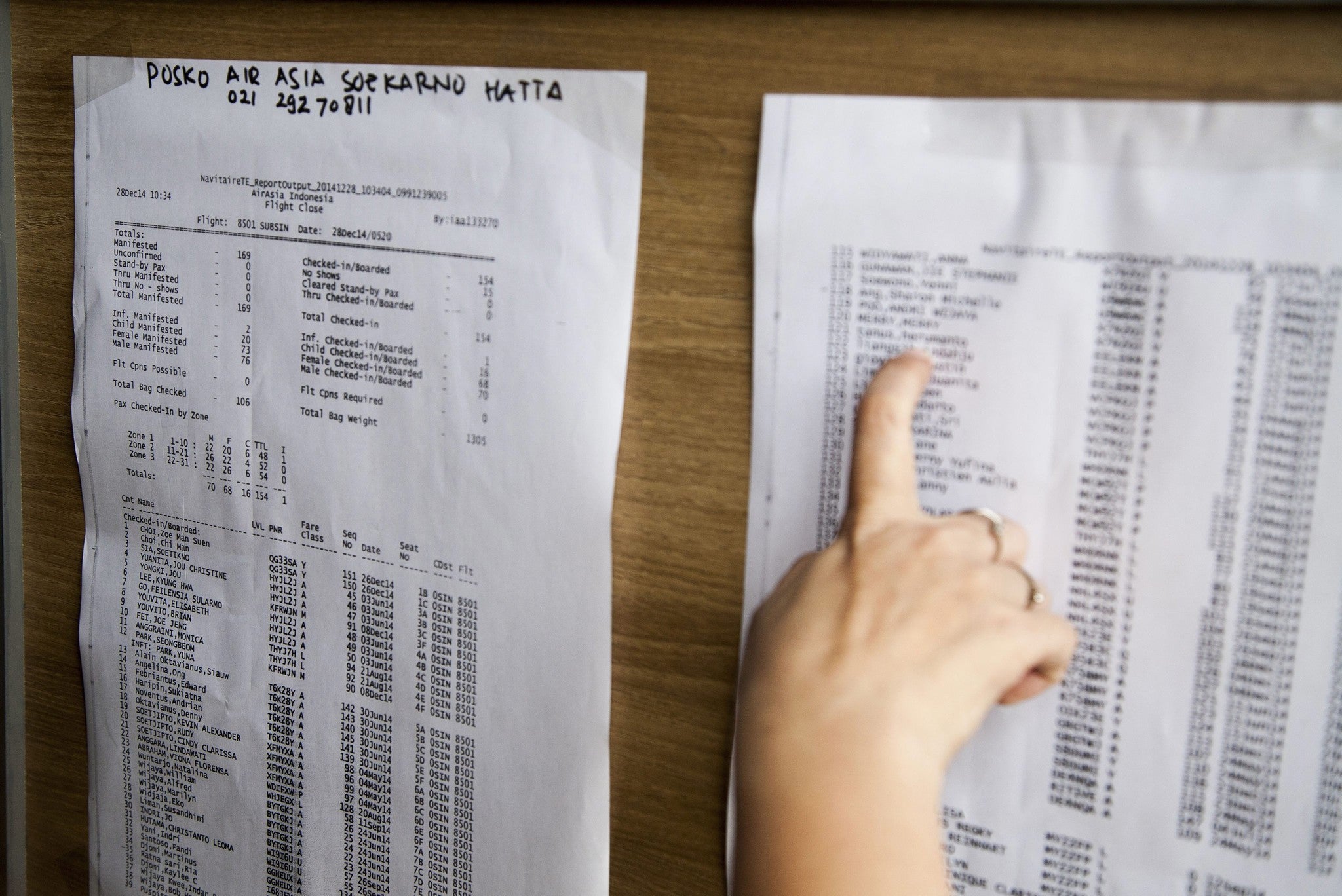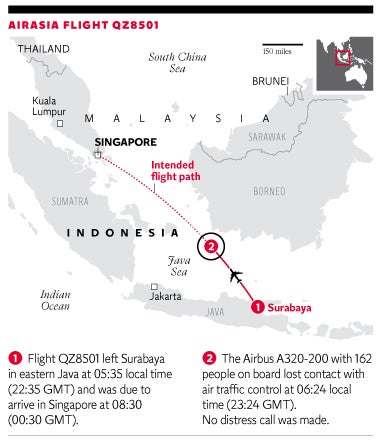Missing AirAsia flight QZ8501: What do we know about the search operation and what could have happened to the missing plane?
The first day’s search over the Java sea for the missing AirAsia flight carrying 162 people has stopped for the night, and will resume in the morning at around 6am local time

Your support helps us to tell the story
From reproductive rights to climate change to Big Tech, The Independent is on the ground when the story is developing. Whether it's investigating the financials of Elon Musk's pro-Trump PAC or producing our latest documentary, 'The A Word', which shines a light on the American women fighting for reproductive rights, we know how important it is to parse out the facts from the messaging.
At such a critical moment in US history, we need reporters on the ground. Your donation allows us to keep sending journalists to speak to both sides of the story.
The Independent is trusted by Americans across the entire political spectrum. And unlike many other quality news outlets, we choose not to lock Americans out of our reporting and analysis with paywalls. We believe quality journalism should be available to everyone, paid for by those who can afford it.
Your support makes all the difference.A major search operation was launched by both Indonesian and Singaporean authorities after the plane lost contact with ground control during its flight from Surabaya to Singapore.
The Indonesian air force said it sent two C-130 aircraft to search an area of the Java sea, focusing on the waters around south Borneo, while the Indonesian army, the national Search and Rescue Agency and South Korea and Malaysia said it would also contribute to search efforts.
The air search is understood to have been sent southwest of Pangalan Bun in Kalimantan province, Borneo, and Java, Indonesia, but conditions were cloudy and caused visibility to be reduced to between 5 and 10 kilometres, according to the BBC.

Search planes and ships are understood to have started efforts from the point where the plane disappeared from tracking screens, and the area around Pangalan Bun was around halfway along the flight’s expected path.
According to officials, the pilot contacted Jakarta air traffic control at 6:12 a.m. Indonesian local time, reporting clouds and asking to climb from 32,000 feet (9,700 metres) to 34,000 feet (10,303 metres), the usual cruising altitude for jetliners.
There was no distress signal made from the flight and the plane’s communication was lost while it was still under the control of the Indonesian Air Traffic Control.
Ships are still searching the area overnight, though speculation has begun to mount over the chances of finding any survivors from the plane.
David Learmount, Flight Global's operations and safety editor, has claimed the plane would not be able to still be airborne, as “it was a short-haul flight, there would be no fuel for staying in the air for quite as long as this”.
He said it was “routine” for pilots to request diversions when approaching stormy conditions, as was the case with the Airbus A320-200.
“We're not just talking about thunder and lightning here.
”Storms can be very, very powerful indeed and rip a medium-sized aeroplane completely apart, that's why a pilot will routinely ask to divert around them.”
Mr Learmount, who is a pilot, also ruled out the likelihood of passengers surviving a sea landing.
He added: “The pilots were talking to air traffic control right until the last minute.
"Something distracted their attention so they were no longer able to keep talking. We don't know what happened at the moment, and it doesn't appear to be a deliberate act.
“We can speculate ad infinitum when the only thing we can go on is that it is missing.
”But I think the prognosis is not good.”
The Airbus A320 is a workhorse of modern aviation. The A320 family of jets, which includes A319 and A321, has a very good safety record, with just 0.14 fatal accidents per million take-offs, according to a safety study published by Boeing in August.
Passing through bad weather such as severe thunderstorms could have been a factor with Flight QZ8501. Airbus jets are very sophisticated and are able to automatically adjust to wind shears or other weather disruptions. However, weather has played a role in past air disasters that occurred at cruise elevation, including the 2009 Air France Flight 447 crash over the Atlantic Ocean.
Another possibility is some type of catastrophic metal fatigue caused by the cycle of pressurization and depressurization associated with each take-off and landing cycle — something that Flight Z8501 would have done a great amount. However, metal fatigue is unlikely because this plane is only six years old.
The search effort is expected to resume at first light, around 7am local time, depending on the weather.
Join our commenting forum
Join thought-provoking conversations, follow other Independent readers and see their replies
Comments